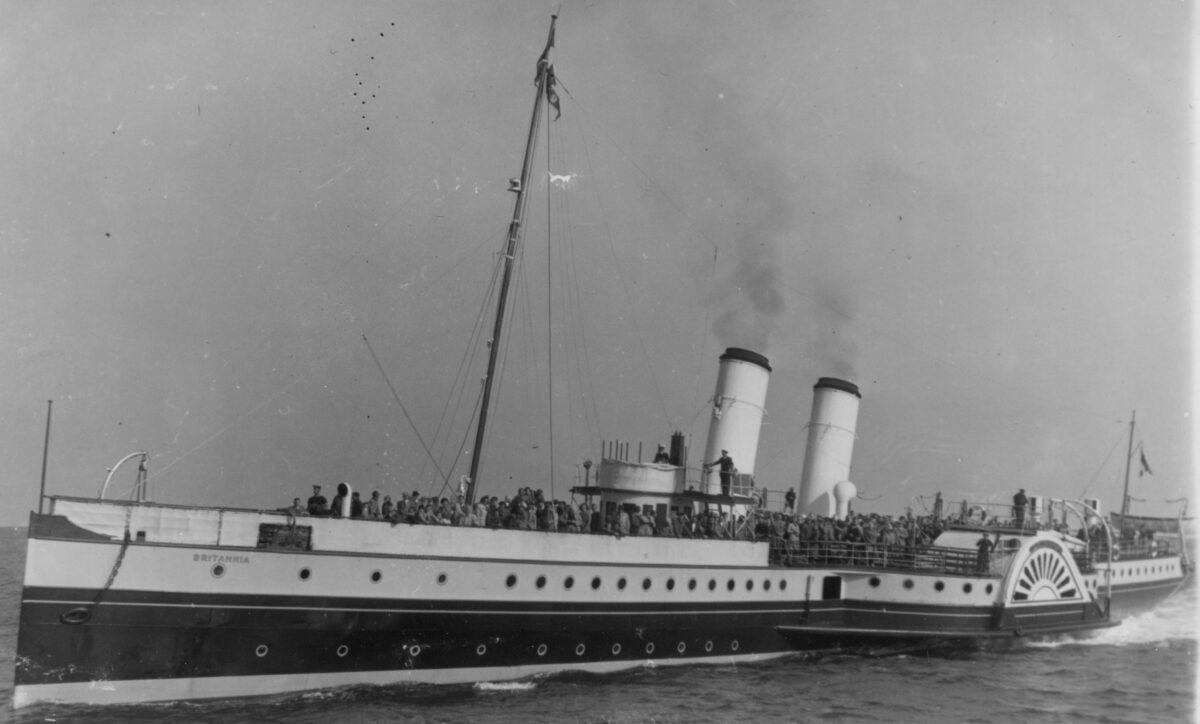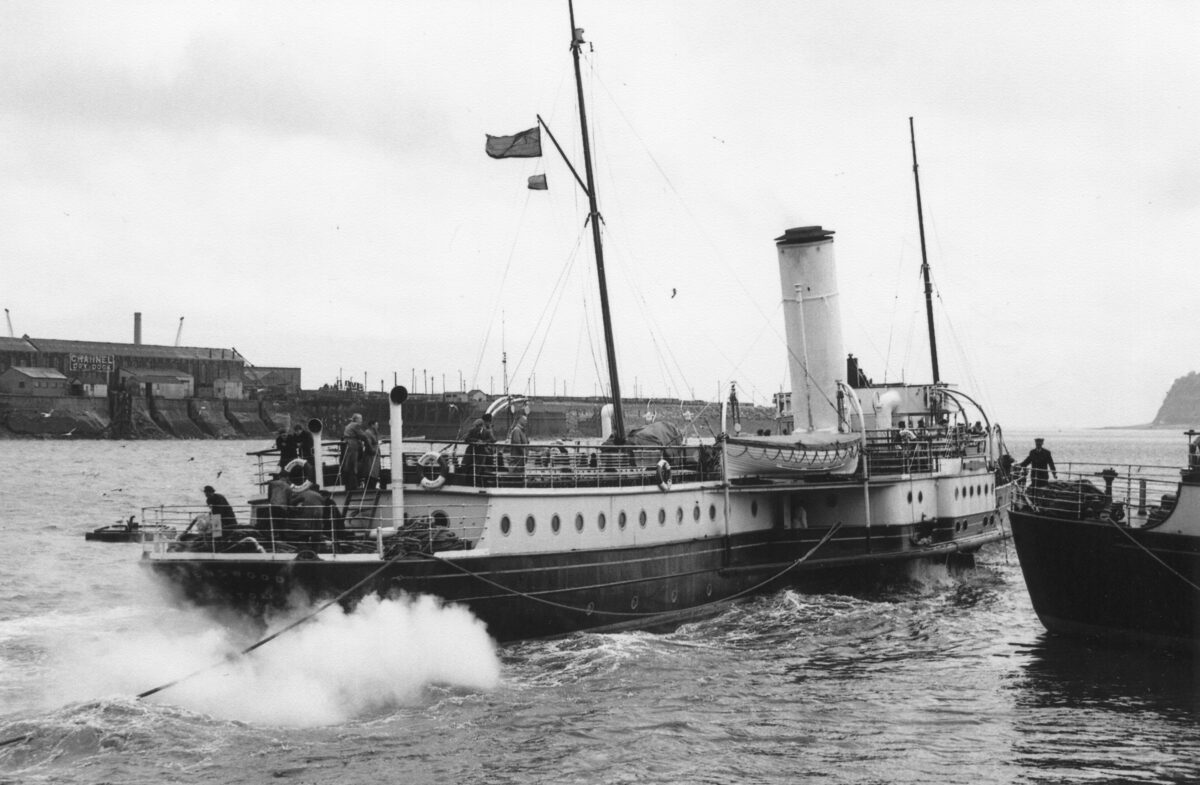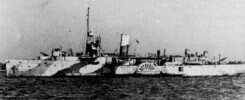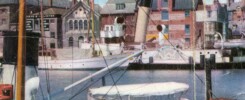
Around midday on Monday 16th January 1950 P & A Campbell’s paddle steamers Britannia and Ravenswood left Charles Hill’s drydock at Bristol, which they had shared, dead ship and under tow by two tugs each, one on the bow and one on the stern of each ship. Britannia was moved to the company’s own yard in the Floating Harbour and Ravenswood to the Merchant’s Dock to continue their refits afloat.
Each year from January to April was a busy time for the shipyards servicing and maintaining the UK’s fleet of excursion and ferry paddle steamers. Every ship had to be dry-docked each year for survey by the Board of Trade and bottom painting. Every ship had work to be done both in terms of routine maintenance, painting and varnishing as well other other repairs and renewals as necessary. The older the steamers the more work was likely to be needed each year and so the greater the cost of their annual refit.

Operators liked to try to get their dry-dockings as close to the start of their vessels’ seasons as feasible so that they would not have to pay the bill until they had money coming in once again from trading to help their cash flow. For larger companies with larger fleets this just wasn’t possible and the dry-dockings had to be spread out over the winter months. This sometimes required accommodating bank managers to tide them over financially.
In 1950 P & A Campbell fielded a fleet of seven ships including Empress Queen, Bristol Queen, Cardiff Queen, Britannia, Glen Gower, Glen Usk and Ravenswood. In today’s money if each of these dry-dockings had cost around £200K per ship then that would have produced a winter repair and maintenance bill of £1.4 million. If the cost had been £400K per ship then it would have been £2.8 million. That’s a lot of money to be funded from tripping during the ensuing summer. And that is before you have lit the boilers, hired the crew, bought the fuel and ordered the marketing material and steamer notices.
In 1950 three of their ships were fairly new with Bristol Queen just four years old, Cardiff Queen three years old and Empress Queen ten. The remainder were quite elderly with the youngest of these being Glen Gower, by then twenty eight and the oldest Ravenswood for which 1950 would be her sixty ninth operational year.
But in 1950 things still looked fairly rosy. And on Monday 16th January the first two of Campbell’s steamers emerged from their annual dry-dockings in preparation for the coming season.
Kingswear Castle returned to service in 2023 after the first part of a major rebuild which is designed to set her up for the next 25 years running on the River Dart. The Paddle Steamer Kingswear Castle Trust is now fund raising for the second phase of the rebuild. You can read more about the rebuilds and how you can help if you can here.
John Megoran
This article was first published on 16th January 2021.


